
How to Use Adafruit 1.2 Inch 8x8 LED Matrix Backpack White: Examples, Pinouts, and Specs
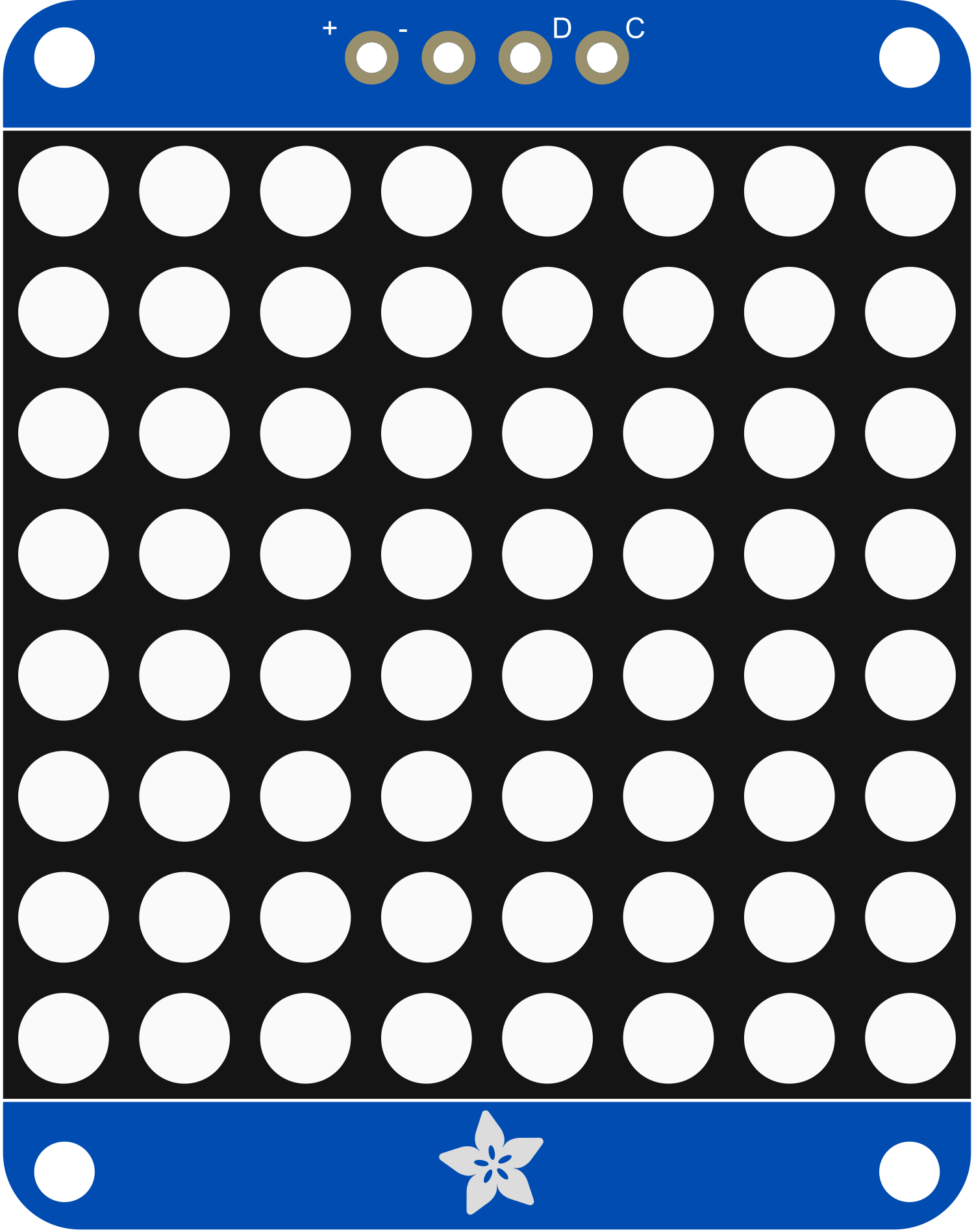
 Design with Adafruit 1.2 Inch 8x8 LED Matrix Backpack White in Cirkit Designer
Design with Adafruit 1.2 Inch 8x8 LED Matrix Backpack White in Cirkit DesignerIntroduction
The Adafruit 1.2 Inch 8x8 LED Matrix Backpack is a compact and easy-to-use hardware module that simplifies the process of controlling an 8x8 grid of white LEDs. This component is ideal for creating displays for characters, symbols, and simple graphics in various electronics projects. Common applications include wearable electronics, message boards, and educational tools for teaching programming and electronics.
Explore Projects Built with Adafruit 1.2 Inch 8x8 LED Matrix Backpack White
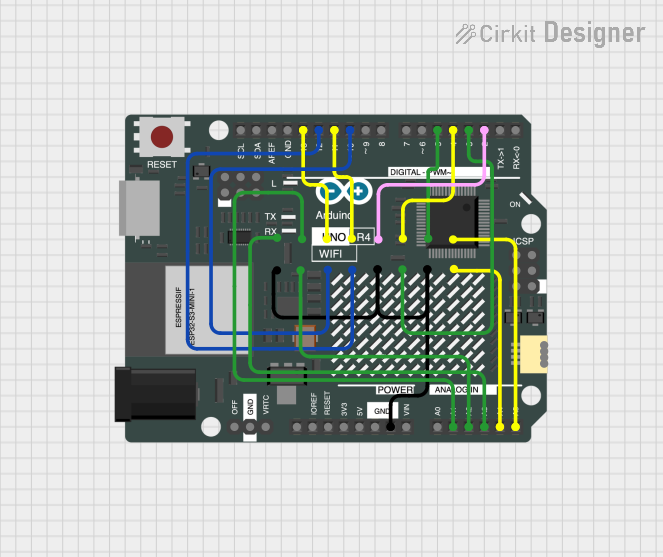
 Open Project in Cirkit Designer
Open Project in Cirkit Designer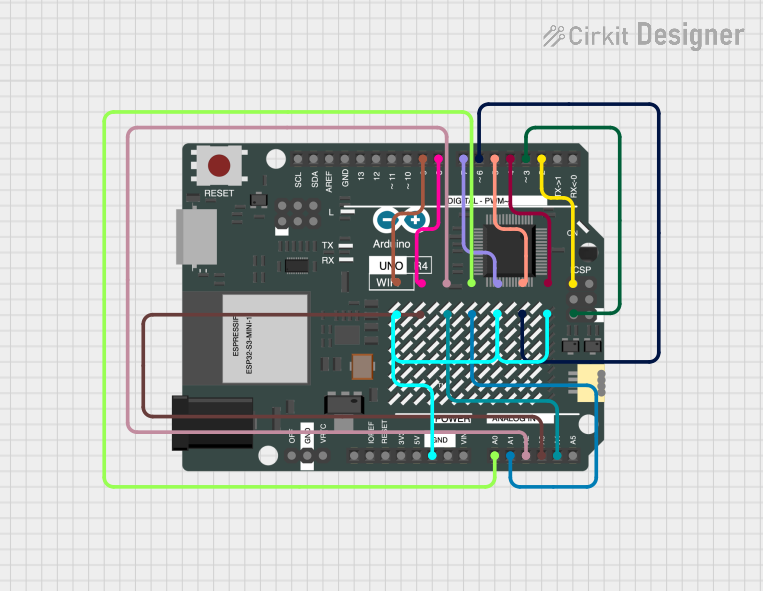
 Open Project in Cirkit Designer
Open Project in Cirkit Designer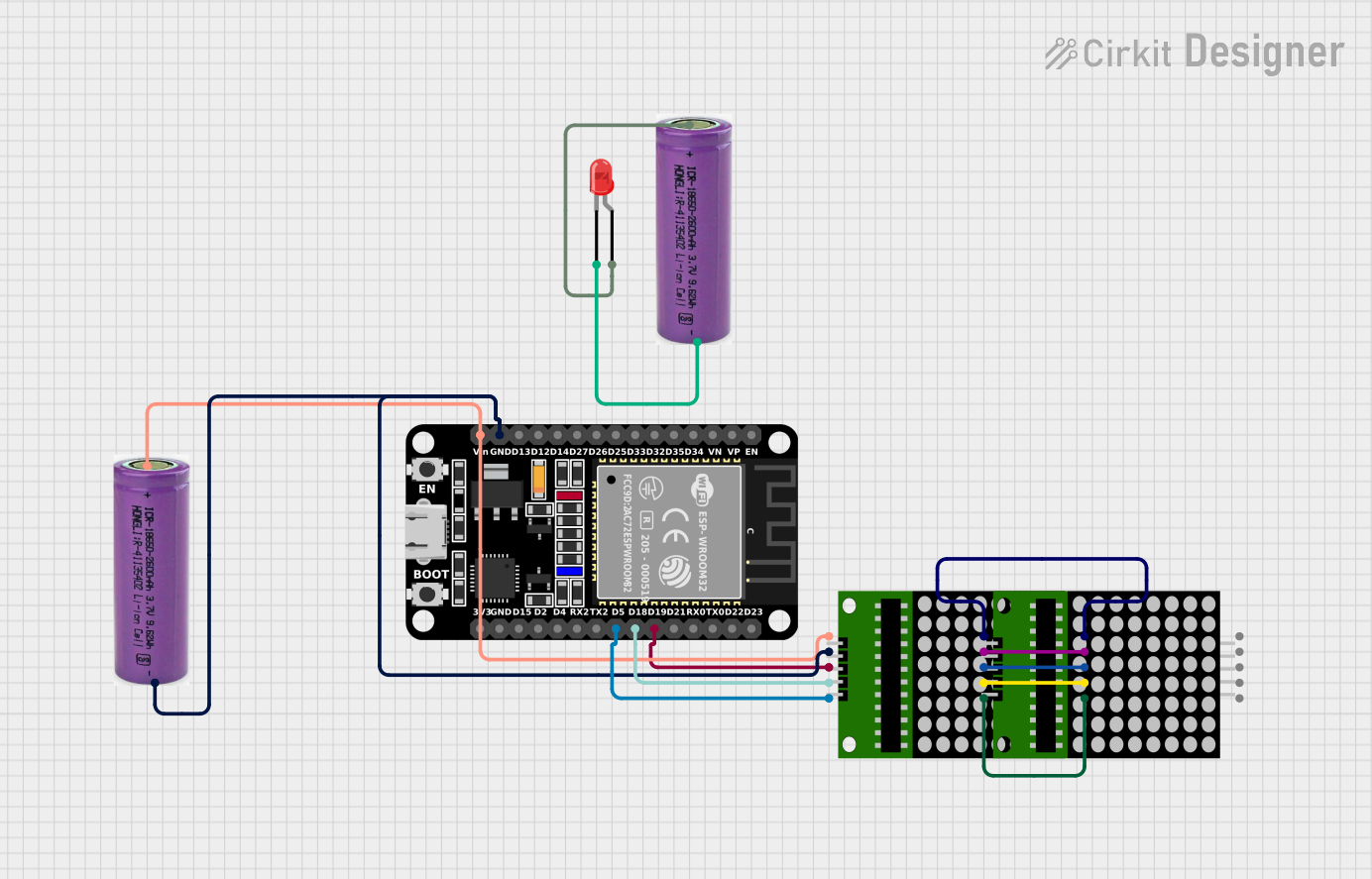
 Open Project in Cirkit Designer
Open Project in Cirkit Designer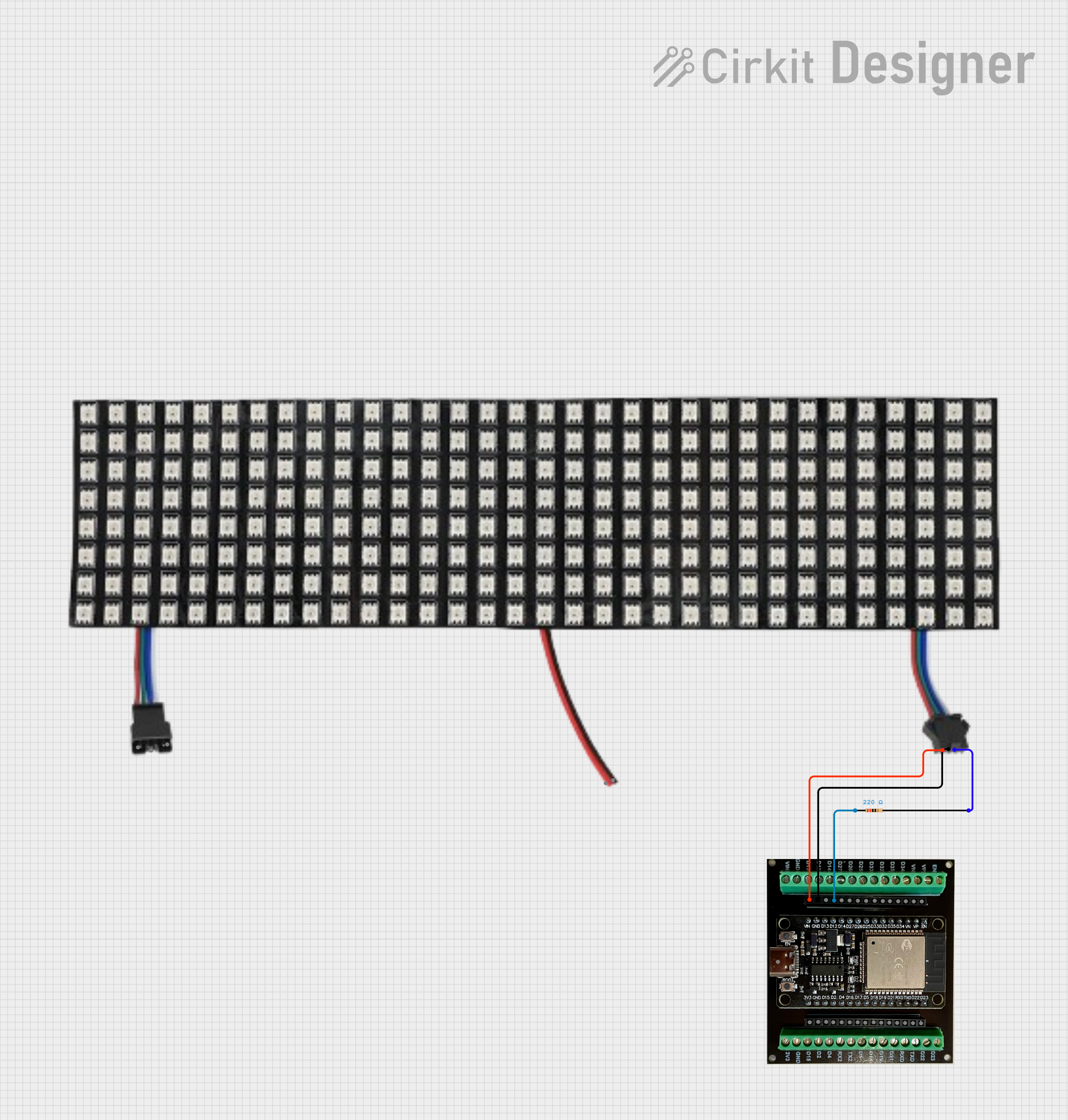
 Open Project in Cirkit Designer
Open Project in Cirkit DesignerExplore Projects Built with Adafruit 1.2 Inch 8x8 LED Matrix Backpack White

 Open Project in Cirkit Designer
Open Project in Cirkit Designer
 Open Project in Cirkit Designer
Open Project in Cirkit Designer
 Open Project in Cirkit Designer
Open Project in Cirkit Designer
 Open Project in Cirkit Designer
Open Project in Cirkit DesignerTechnical Specifications
Key Technical Details
- Display Color: White
- Matrix Dimensions: 1.2 inches (8x8 grid)
- Operating Voltage: 4.5V - 5.5V
- Max Current (with all LEDs on): ~320 mA
- Interface: I2C
- I2C Addresses: 0x70 (default) - 0x77 (selectable with solder jumpers)
Pin Configuration and Descriptions
| Pin | Description |
|---|---|
| VCC | Power supply (4.5V - 5.5V) |
| GND | Ground connection |
| SDA | I2C data line |
| SCL | I2C clock line |
Usage Instructions
Integrating with a Circuit
To use the Adafruit 1.2 Inch 8x8 LED Matrix Backpack in a circuit, follow these steps:
- Connect the VCC pin to a 5V power supply.
- Connect the GND pin to the ground of your power supply.
- Connect the SDA and SCL pins to the corresponding I2C data and clock lines on your microcontroller (e.g., Arduino UNO).
Important Considerations and Best Practices
- Ensure that the power supply does not exceed 5.5V to prevent damage to the LED matrix.
- If multiple LED matrix backpacks are used in a project, set unique I2C addresses for each using the solder jumpers on the back of the PCB.
- Use pull-up resistors on the I2C lines if your microcontroller does not have built-in pull-ups.
Example Code for Arduino UNO
#include <Wire.h>
#include <Adafruit_GFX.h>
#include <Adafruit_LEDBackpack.h>
Adafruit_8x8matrix matrix = Adafruit_8x8matrix();
void setup() {
matrix.begin(0x70); // Start the LED matrix with the I2C address
matrix.setBrightness(10); // Set brightness level (0 is dim, 15 is bright)
}
void loop() {
matrix.clear(); // Clear the matrix display
matrix.drawPixel(4, 4, LED_ON); // Draw a single pixel
matrix.writeDisplay(); // Write the changes to the display
delay(500);
matrix.clear(); // Clear the display again
matrix.writeDisplay(); // Write the changes to the display
delay(500);
}
This example initializes the LED matrix and blinks a single pixel on and off. Ensure you have installed the Adafruit_GFX and Adafruit_LEDBackpack libraries before uploading this code to your Arduino UNO.
Troubleshooting and FAQs
Common Issues
- LEDs not lighting up: Check the power supply connections and ensure that the I2C address is correctly set.
- Dim display: Increase the brightness using
setBrightness()function or check the power supply voltage. - Garbled display: Ensure that there are no loose connections and that the I2C lines are connected properly.
Solutions and Tips for Troubleshooting
- Double-check wiring, especially the I2C connections.
- Use the
i2cdetecttool or similar to confirm that the Arduino can communicate with the LED matrix. - If using multiple matrices, ensure that each has a unique I2C address.
- Check the Adafruit forums and guides for additional support and resources.
FAQs
Q: Can I use this LED matrix with a 3.3V system?
A: While the matrix is rated for 4.5V - 5.5V, it may work at 3.3V with reduced brightness. However, this is not officially supported and may lead to unpredictable behavior.
Q: How do I change the I2C address?
A: Solder the address jumpers on the back of the PCB to configure the address between 0x70 and 0x77.
Q: Can I daisy-chain multiple matrices?
A: Yes, you can connect multiple matrices in series by connecting the SDA and SCL lines in parallel and providing each matrix with a unique I2C address.